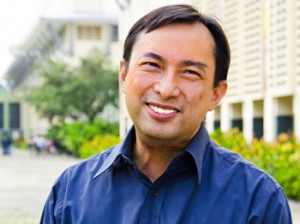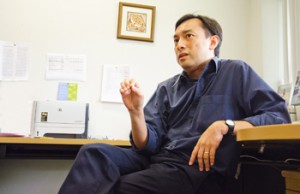Why Singapore’s English Teachers Should Embrace Singlish, Not Fight It
Is it time for Singaporean educators to embrace Singlish as a legitimate learning tool? What the Research […]
Read More
As teachers, you put a lot of effort into preparing students for exams and in grading them. But in the process, learning may inadvertently take a back seat. Does assessment spell the end of learning?
Assessments are often equated with tests and exams. These are useful for ranking and placement purposes, when we need a practical way to make critical decisions.
However, a second – and perhaps more critical – purpose of assessment is to support and enhance learning. “In contrast to the regulatory approach, it’s the educational purpose of assessment,” says Assistant Professor Kelvin Tan.
The danger is when the regulatory functions dominate the educative benefits of assessment. “Once the assessment stops, the learning stops. Sometimes it signals the end of learning,” he notes.
But this need not be the case. For Kelvin, it starts with a healthy view of assessment.
 “Mentally, everyone knows teachers cannot do the learning for the students. But in reality teachers act the opposite way,” observes Kelvin.
“Mentally, everyone knows teachers cannot do the learning for the students. But in reality teachers act the opposite way,” observes Kelvin.
“They are teaching and assessing in a way as if it’s all dependent on them.”
So we labour over each test paper and exam script, making annotations and suggesting corrections. All that feedback was meant to help students improve on their learning. It was meant to feed back into their learning.
But more often than not, it doesn’t. It doesn’t get a chance to.
In order not to let all that effort go to waste, Kelvin believes teachers should start passing the baton of learning back to the students.
We need to think more about what assessment should do for students’ learning, and less about what students should be learning for assessment.
Assessment for learning prompts and enhances the quality of learning. “It happens when teachers introduce a notion of assessment that is integral to the students’ learning, and not something that concludes learning.”
This has prompted many teachers to think about an alternative to the current practices of assessment. But an alternative assessment practice may not always be a meaningful departure or an improvement from traditional assessment. Much depends on how teachers understand and use it in schools.
From his research, Kelvin found that most teachers are either conservative or pragmatic in their use of what they understand to be “alternative assessment”.
– Kelvin Tan, Curriculum, Teaching and Learning Academic Group
Conservative teachers would rather not divert from the current practice. If there is spare curriculum space, they may provide an additional worksheet or task. But this doesn’t interfere with or distract from the existing traditional assessment.
Pragmatic teachers are also happy to abide within the existing curriculum boundaries and structures. If they find an alternative assessment practice to be effective, such as a learning journey project, they may give it 1 or 2 weeks within curriculum time.
Kelvin recommends taking a more progressive view of assessment, one that is integral to learning. It’s about sustainable learning – beyond assessment, beyond their academic lives.
“Teachers who have this conception have a broad view of education,” he says. “They are able to satisfy imminent pragmatic educational needs – scoring well in exams – and yet go beyond that.”
 Improving the quality of learning may require a paradigm shift, but it need not entail a drastic change in practices. The question Kelvin asks are: What is alternative assessment an alternative to? What purpose do you want it to achieve?
Improving the quality of learning may require a paradigm shift, but it need not entail a drastic change in practices. The question Kelvin asks are: What is alternative assessment an alternative to? What purpose do you want it to achieve?
The best assessments generate feedback that students can use. They are told how well they have done and what else they can do to improve their learning. This means giving students opportunities to act on that feedback.
For assessment to be effective, it must have an imminent impact on learning. This means students should act on the feedback sooner than later. This can be done by giving them a similar task soon after the previous task. Teachers can then track the progress of the students.
“The underlying issue is how the curriculum is designed and understood. It’s not so much the assessment,” notes Kelvin.
– Kelvin on a progressive view of assessment
Teachers can design the sequence of assessments to create a coherent series of assessment tasks over a period of time, instead of a one-off task, such that each assessment task works in relation with the rest and they feed into each other.
“Design an assessment that generates feedback and provides a subsequent context for the feedback to be used,” advises Kelvin. “This will create a dialogue between teachers and students on how and what to understand.”
Alternative assessment need not mean additional work. “You decide what you have time for,” says Kelvin. “How can students benefit from you? Once teachers can understand and appreciate that, they will rethink their teaching–assessment–feedback cycle.”
Reference
Tan, K. H. K. (2012). Variation in teachers’ conceptions of alternative assessment in Singapore primary schools. Educational Research for Policy and Practice. Advance online publication. doi: 10.1007/s10671-012-9130-4